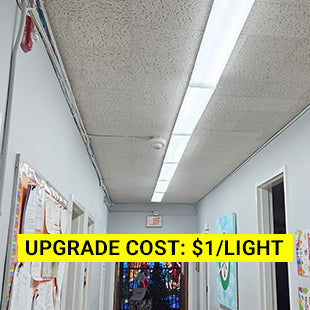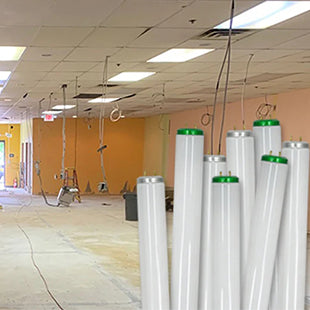Many of us are familiar with color temperature, at least to the point that we understand that some lights produce "warm" whites and some produce "cool" whites. Perhaps we also know that warmer lights are best for locations where we want to convey a feeling of comfort, luxury, or intimacy, while cooler lights are suited for locations where we want to convey modernity or cleanliness. Color temperature, therefore, provides ambiance.
However, ambiance is only half the story.
Before you purchase lighting, you'll also want to know how the lights will make the objects and surfaces it illuminates appear. Two lights with the same color temperature rating aren't guaranteed to produce the same results. For that, you need to know the color rendering index, or CRI.
But let's start with a bit of a deeper explanation of color temperature.
About Color Temperature
The word "temperature" can be confusing here. It doesn't have anything to do with the temperature of the bulb itself, or the light it produces. Instead, it answers the question, "To what temperature would an opaque, non-reflective object have to be heated to produce light of this color?"
The cooler something burns, the redder the light it produces; the hotter it burns, the bluer the light. The below photo shows the flame of a Bunsen burner, starting, on the left, with the burner's air valve fully closed. This produces the "coolest" of flames, temperature-wise, and the "warmest" in appearance, color-wise. As the air valve is gradually opened, the flame begins to take on more cooler colors, first gaining a pink tinge, then purple, then blue.
Los Angeles Bureau of Street Lighting's before and after photo—low pressure sodium streetlights on the left, LED lights on the right.
How to Use CRI in Your Purchase Decision Process
How important is it to your application that colors are accurately reproduced? Certainly an artist's studio, gallery, or museum will call for lighting with a high CRI. Task lighting can also benefit from high CRI. For many other applications, such as parking garages, offices, security lighting, hallways and stairwells, waiting rooms, many classrooms, and more, CRI can be secondary to other factors, such as wattage, light output (lumens), or price.
In other words, CRI is important for the applications it's important in, but for the many applications that are less sensitive to color accuracy, you shouldn't feel obligated to increase your budget just to get high CRI lighting, particularly given that most, if not all, of the LED lighting you'll come across will have a higher CRI than the average fluorescent lamp, making it already a pretty good improvement over applications that would have traditionally used fluorescent lighting (and, certainly, a huge improvement over low pressure sodium lights!).





